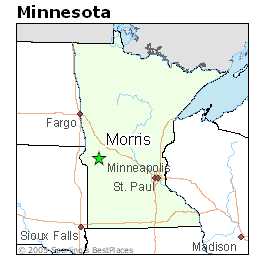 |
| Photo from Wikimedia Commons |
George Will wrote in the wake of 9/11 that one way to prevail is to simply
kill everyone on the other side. He gave the Civil War as an example. Of course,
not all Confederates were killed - they were sprinkled out and about in the
devastated South. But so many were, and the antebellum lifestyle so decisively
crushed, a mere vestige or whisper seemed all that was left.
The planter aristocracy was no more. The Myth of the Lost Cause came to
replace whatever legs the Confederacy had. It has floated around to this day.
But there is no real imprimatur there. No state-sanctioned entity touches it.
Minnesota still has a captured Confederate battle flag from Gettysburg.
Whenever pleas are heard from Virginia for its return, it's not from government
spokesmen, it's from a re-enactors group. Technically that flag was supposed to
have been returned. Such flags were returned as part of reconciliation efforts.
But ours got missed.
Then-Governor Jesse Ventura said "no" the last time this kerfuffle got
attention. He showed his standard bravado, saying something like "we won." I'm
not sure that was necessary. You might argue the flag is immaterial.
Such issues are not uncommon. While the real Confederates are asleep in
their graves, the symbolism and sentiment connected to that great war float
around as if some ghost.
The Confederate battle flag was prominent on the Georgia state flag from
1956 to 2001. A governor thinks it harmless to recognize a month for
"Confederate history appreciation." He is promptly corrected and reverses
course. (That state was Virginia.)
Yes, the Confederacy just loses and loses.
Now we have finally come to the issue of Stone Mountain. Maybe it's about
time. We are all familiar with Mount Rushmore in South Dakota. Its fame is
justifiable partly because it celebrates the whole United States.
Stone Mountain in Georgia was begun by the same artist who crafted Mount
Rushmore. Artistically it represents something very distinct. It's the world's
largest bas-relief sculpture. The images are seen on what is reportedly the
largest hunk of exposed granite in the world. The dome-shaped mountain protrudes
from the wooded perimeter of Atlanta. The three-acre carving there might inspire
awe to the same extent as our beloved Mount Rushmore.
The problem is the subject matter. These are not unifying images. We see
General Robert E. Lee, "Stonewall" Jackson and Jefferson Davis, stalwarts of the
doomed Confederacy. They're riding horses and with hats held over their hearts.
Lee stands nine stores tall!
Lest there be any doubt about the purpose of this structure, we learn it
was commissioned by the United Daughters of the Confederacy in 1915. It was put
forth as the South's foremost Confederate shrine.
Maybe it could have stayed benign as sort of a gesture toward American
history. As such, maybe it could be accepted. But the Ku Klux Klan came out of
hiatus to re-form there in a rally in 1915. The Klan would declare Atlanta its
Imperial City.
Who would want to take responsibility for such a sculpture today? Well,
someone has to own it. Stone Mountain Park is perhaps surprisingly owned by the
State of Georgia. It's managed by Stone Mountain Memorial Association, a Georgia
state authority. This may not be a placid state of affairs.
An activist named McCartney Forde suggests replacing the current symbolism
with something more unifying. Using the "Change.org" petition system, Forde
wants people to come on board with the idea of stepping into the 21st Century,
as it were.
Forde is concerned that Stone Mountain as it is now, "perpetuates the
perception of Georgia as an icon of racism, slavery and oppression," according
to an online news account. He calls it a "black eye." He wants to see something
new there, a monument that would honor all Georgia servicemen who were killed,
wounded or taken prisoner in post-Civil War conflicts.
I'm guessing that state officials would be relieved if such a change
happened. They must have to approach Stone Mountain very delicately. There
cannot be any suggestion that the Confederacy itself had virtue.
You might say Stone Mountain represents the supreme challenge for
"spinning." Somehow the original message of this monument has to be covered up
and replaced with something about reconciliation. Yes, there was a conflict
called the Civil War. Yes, the losing side was going to stick with slavery. Yes,
all the forces of history and destiny were aligned against the likes of Lee,
Jackson and Davis.
But the Old South was re-incorporated into the U.S.
Might Stone Mountain be allowed as kind of a sop? Could it be sold merely as a gesture to history? I'm guessing this is the best Georgia state officials can do.
Might Stone Mountain be allowed as kind of a sop? Could it be sold merely as a gesture to history? I'm guessing this is the best Georgia state officials can do.
Some change was forced in the '90s when the park at the mountain's base was
named an Olympic venue. A museum exhibit opened just before the Olympic Games.
There was no mention of the KKK.
Tony Horwitz wrote that "the park's management had also chosen to soften
the Confederate content of a popular laser show that used the sculpture as a
backdrop."
Horwitz wrote about a visit there in his acclaimed book "Confederates in
the Attic." He was struck by differences with Mount Rushmore. He wrote "here,
the figures were shown in profile, in relatively shallow relief, as though a
huge Confederate coin had left a fossil-like print on the mountain face."
Horwitz took in the laser show. A soft drink company had no problem
promoting itself. But this was a painstakingly sanitized show. The images were
fast and furious, all quite innocuous and reflecting pop culture more than
anything. The mascots of various Georgia universities appeared. The song "Dixie"
blared forth but it segued into "Battle Hymn of the Republic."
We must remember who won that war, indeed. Finally the image was projected
of Lee breaking his sword across his leg. Reconciliation! Never mind that the
end of the bloody U.S. Civil War had Lee saying "uncle."
The sound track finally played "God Bless the U.S.A." Fireworks erupted.
Symbolism of a unified America prevailed.
Was this enough? Forde and presumably many others think not.
Jim Bouton wrote in "Ball Four" (1970) about the people promoting "rebel"
imagery in the South, that "they should let that stuff die with their
grandfathers." He probably should have written "great grandfathers." Today the
word "great" could be affixed several times.
But there is nothing great about Stone Mountain at least in terms of its
message. Forde is right: a new, great message could be proclaimed there. The
momentum is on his side. The Confederacy does nothing but lose.
- Brian Williams - morris mn minnesota - bwilly73@yahoo.com






















No comments:
Post a Comment